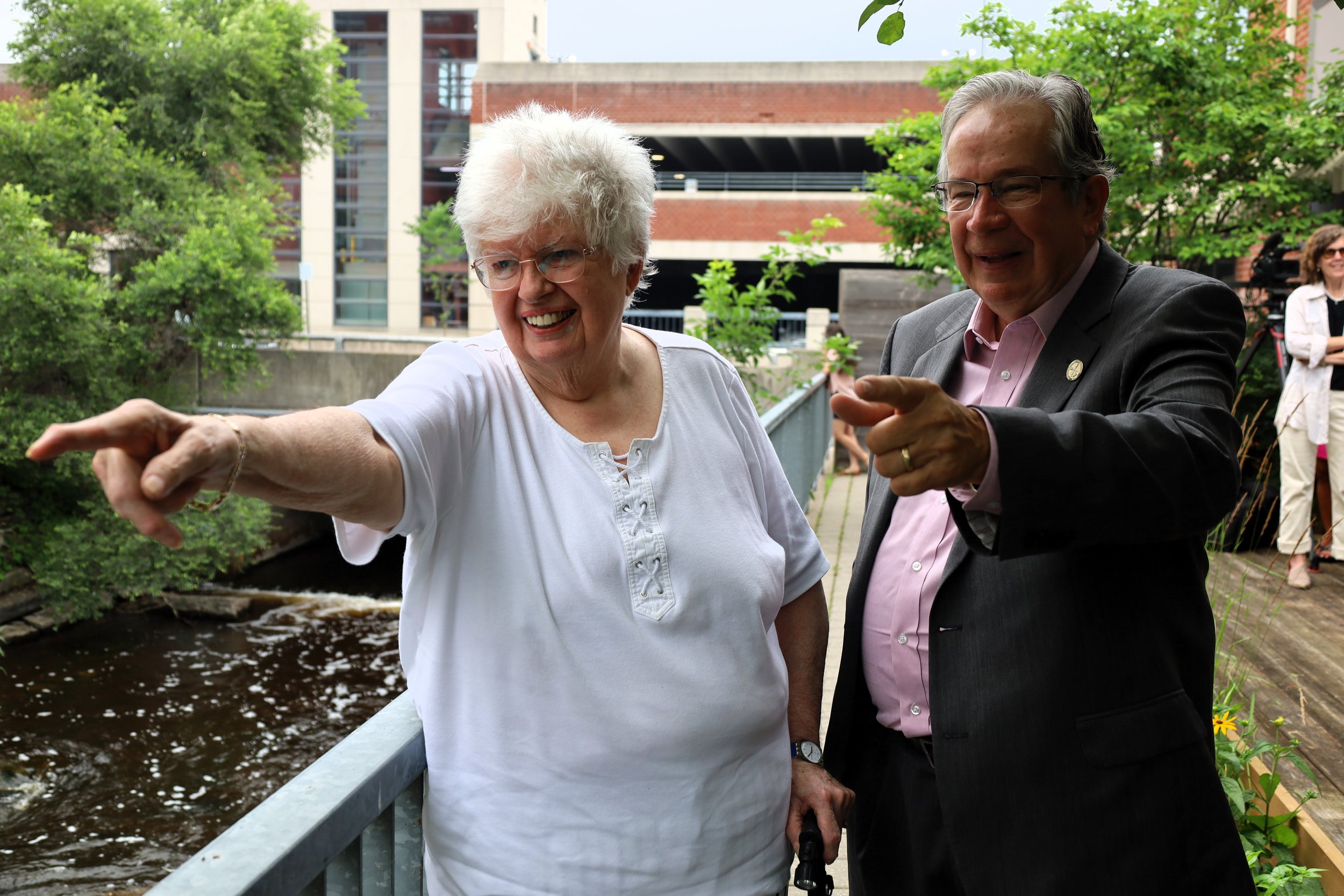City of Peterborough Marks 20th Anniversary of the 2004 Flood
/The 20th anniversary of the 2004 Flood, which devastated Peterborough, saw the City reflect and recognize the milestone at the Engage Engineering courtyard on Monday morning.
Sylvia Sutherland, Former Peterborough Mayor (left) with Jeff Leal, current Peterborough Mayor (right). Sutherland was the mayor during the flood while Leal was serving as the MPP. Photo by David Tuan Bui.









